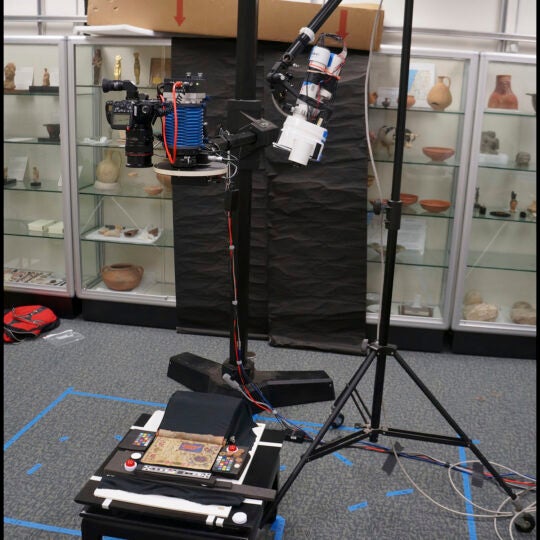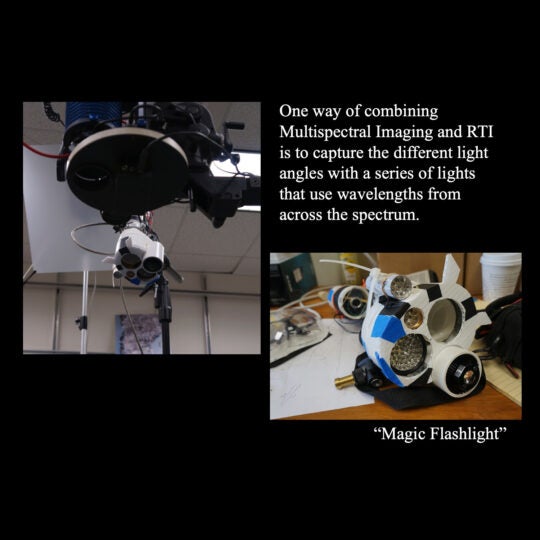Getting the best of color and texture
WSRP’s most recent work has involved the combination of Multispectral Imaging and RTI. Multispectral imaging entails capturing a sequence of images in different wavelengths across the light spectrum, including ultraviolet and infrared. As we have shown, RTI technology provides the capacity to view in detail the textured surface of an artifact. The combination of the two allows the user to see data beyond the visible light spectrum, together with the texture on the surface of the manuscript or other object. Multispectral imaging can be helpful with objects that utilize ink or pigments. This is because various inks or pigments react to wavelengths differently and this property can be used to enhance contrast in a composite image to see data not apparent to the unaided eye. This 16th century manuscript page has been erased, and very little of the ink remains, making it difficult to read. RTI can be useful, because even if the ink is gone, the parchment still retains the impressions of the pen that was used to make the letters. Note that, even without enhancement, the texture of the writing can be seen as the “flashlight” moves around the page. This evidence of texture can be combined with spectral data in which images from across the spectrum, including ultraviolet and infrared, can be mapped to the normal red, green and blue wavelengths that can best be seen by the human eye. Further, pseudocolor images can be produced by creating principal component images and manually selecting the two or three most useful images to place in the red, green, and blue channels of an RGB image. The pseudocolor combination makes it easy to see at a glance the difference between the letters and the background, or, in some cases, the difference between two layers of ink. For more information on this technology see the discussion on “Spectral RTI Technology” at http://palimpsest.stmarytx.edu.
Setup for Multispectral RTI
Cameras and lights for capturing both color along the spectrum and shadow detail are combined.
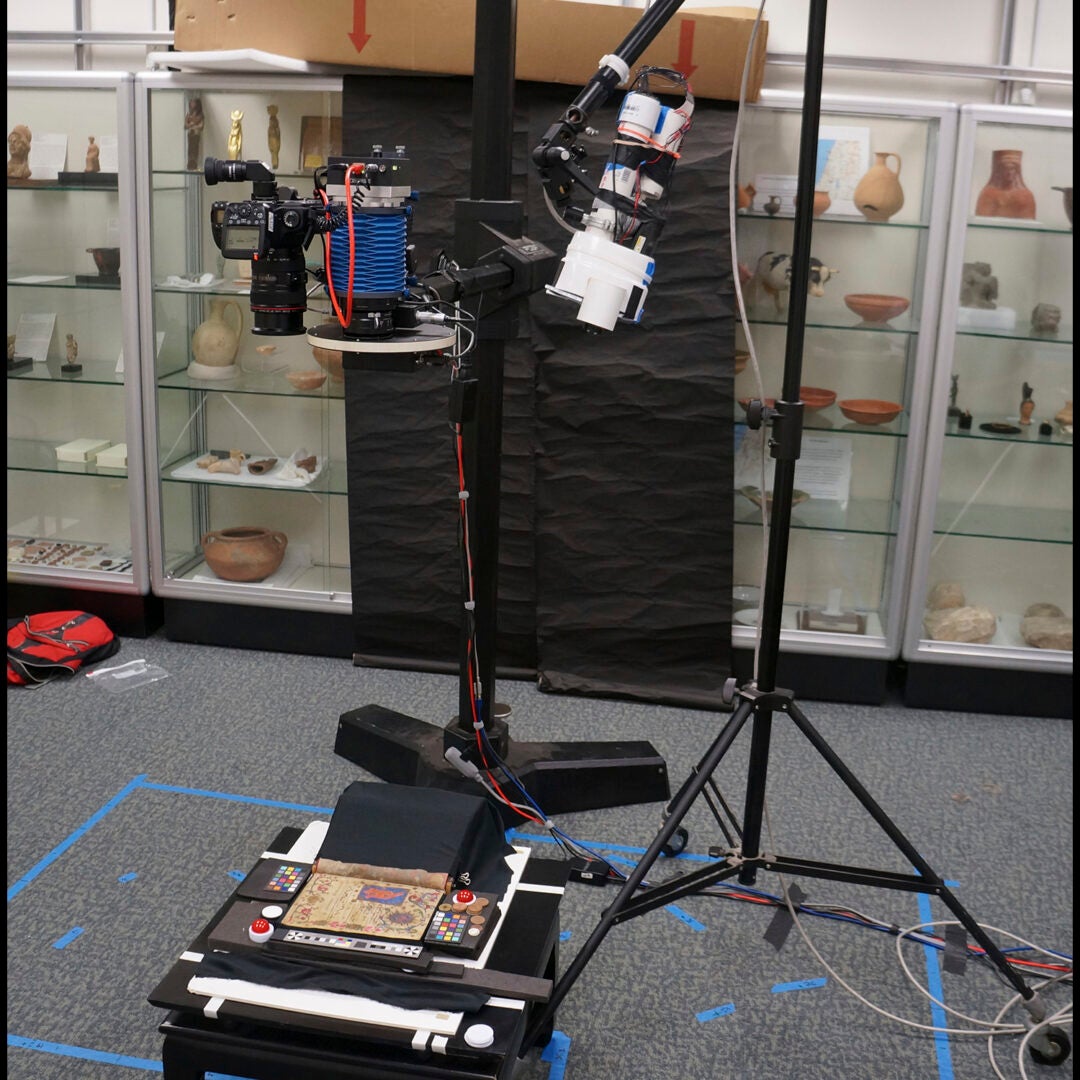
Lighting for multispectral RTI
In our experiment we tried two different ways of capturing both wave lengths from across the spectrum and different light angles. In one we we shot the RTI with flash, and the wave length images from one angle and then combined them. In the other method we shot every wave length from multiple light angles.
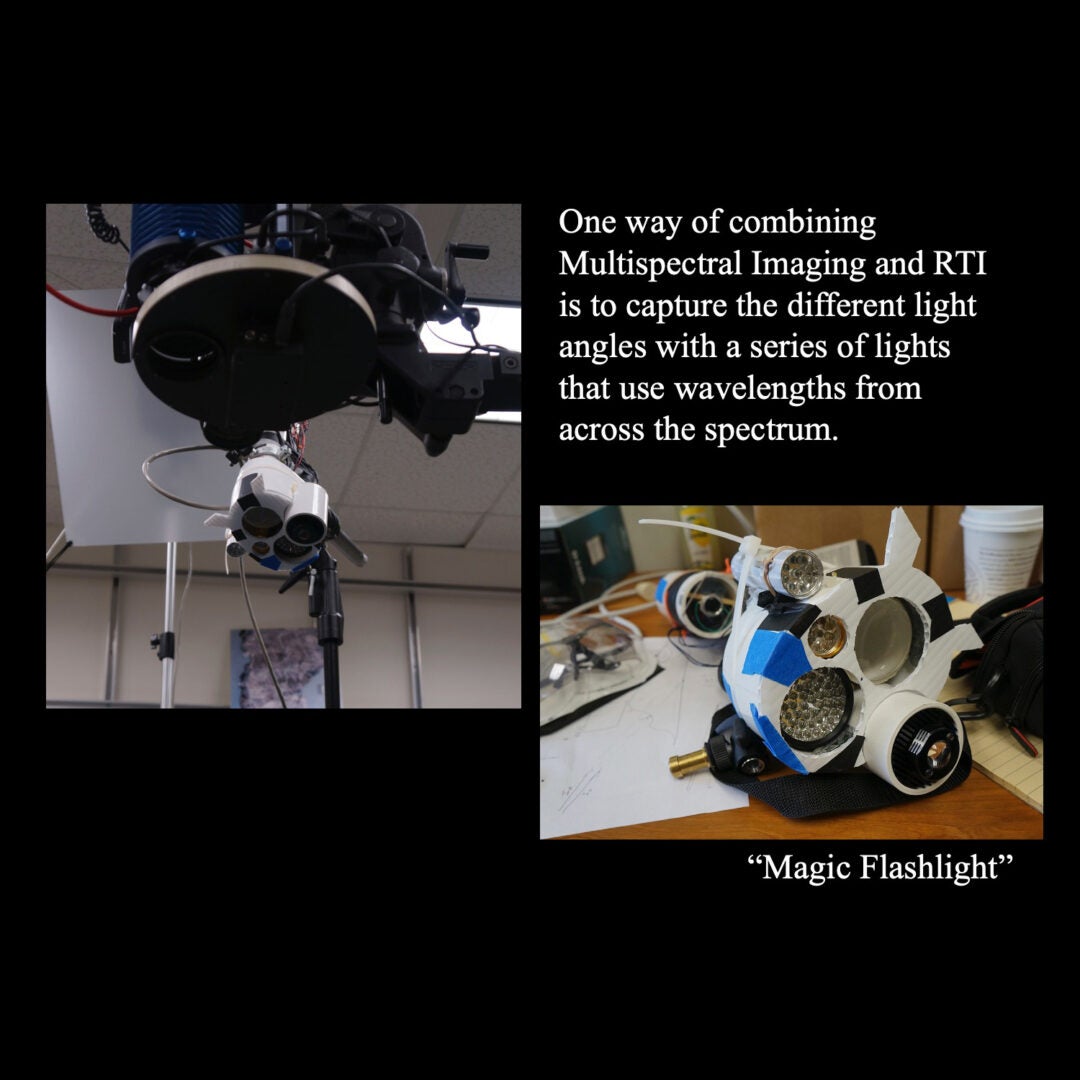
Sample result from a mummy mask
The image on the left shows texture data on the painted mask using RTI alone. The image on the right uses combined RTI and spectral imaging. This can often help in differentiating between pigments that look the same to the naked eye but are made with different substances.
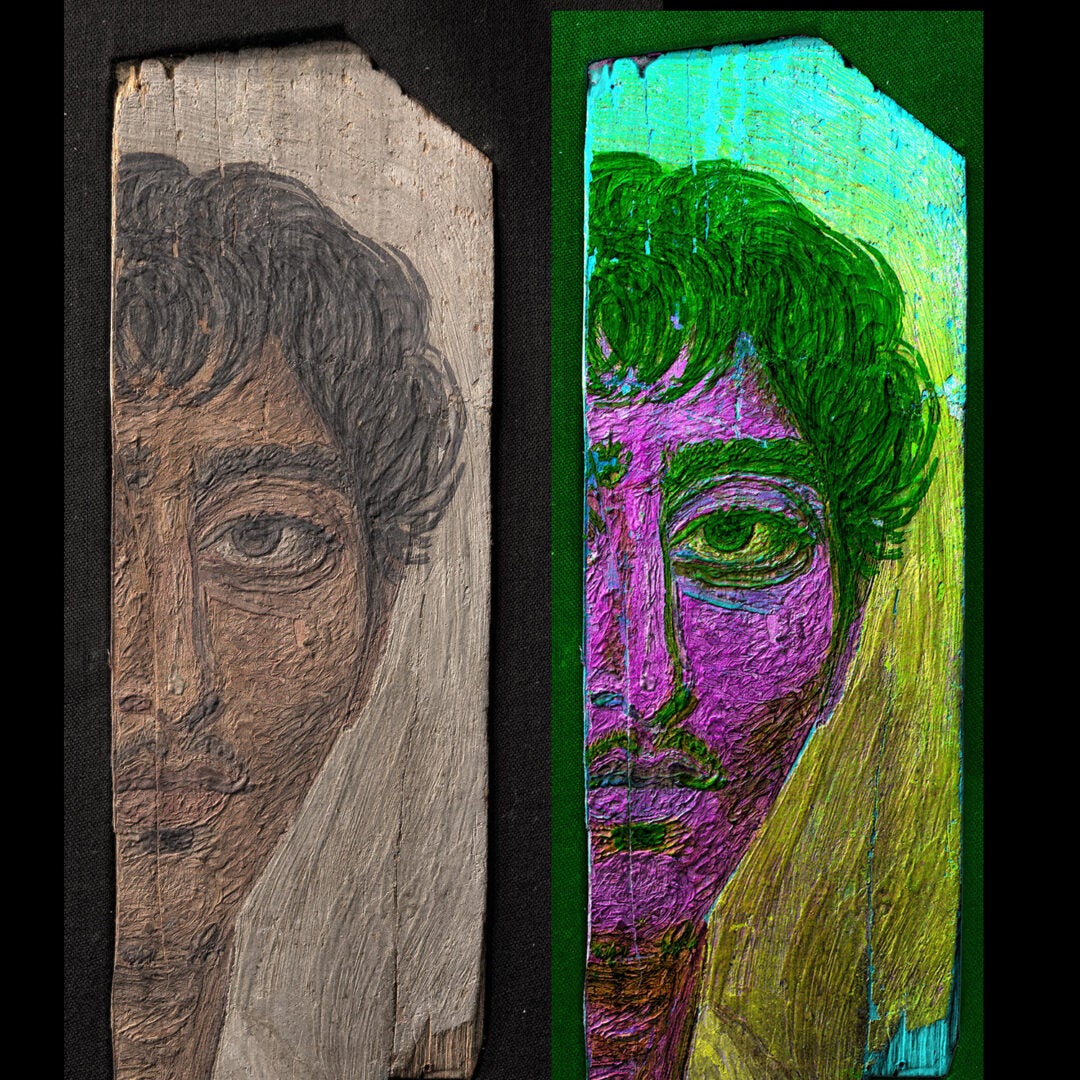
Sample Multispectral RTIs
These videos show examples of the combination of spectral imaging and RTI. The RTI will show the texture, and the spectral imaging, with the use of false color, can call attention to the composition of the pigments, and also bring out pigments which are very faint.
